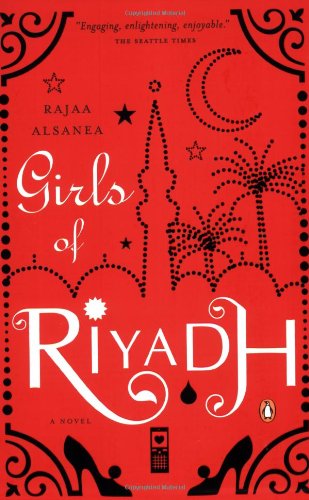
GIRLS OF RIYADH
Girls of Riyadh was released in Lebanon in Arabic in September 2005. The novel, recounting forbidden details about the private lives of four young women from Saudi Arabia’s upper classes, immediately became a sensation all over the Arab world. Hundreds of articles were written about it, politicians and pundits debated it publicly, online chat rooms were crowded with people hotly discussing it, and it sold more than a hundred thousand copies in the first several months—not including the countless black-market editions that were circulating in Saudi Arabia, where it was banned. The author, a twenty-four-year-old Saudi Arabian woman,
Girls of Riyadh was released in Lebanon in Arabic in September 2005. The novel, recounting forbidden details about the private lives of four young women from Saudi Arabia’s upper classes, immediately became a sensation all over the Arab world. Hundreds of articles were written about it, politicians and pundits debated it publicly, online chat rooms were crowded with people hotly discussing it, and it sold more than a hundred thousand copies in the first several months—not including the countless black-market editions that were circulating in Saudi Arabia, where it was banned. The author, a twenty-four-year-old Saudi Arabian woman, became an overnight celebrity. Some considered it courageous for her to write openly about the tumult of educated modern Saudi women growing up in the twenty-first century in a culture firmly rooted in an ancient way of life. Others believed that the novel was disrespectful to Saudi women by exposing their closely guarded private lives to the public. Religious extremists considered the novel blasphemy that should be retracted and banned. Most of the Arab public, however, understood the novel for what it is: a true representation of events that occur in a society structured around traditions that are inherited from centuries past and are impossible to follow in today’s world. Meanwhile, scholars and critics throughout the Arab world hailed the book as a breakthrough in Arabic literature, some going so far as to label it “the first modern Arab novel.”
In this bold debut, Rajaa Alsanea reveals the social, romantic, and sexual tribulations of four young women from the elite classes of Riyadh, Saudi Arabia. Every week after Friday prayers, an anonymous female narrator sends e-mails to the subscribers of her online list-serv. In fifty such e-mails, spanning more than a year, the Scheherazade-like narrator unfolds little by little the comic-tragic reality of a small group of girlfriends—Gamrah, Michelle, Sadeem, and Lamees—as they negotiate their love lives, their professional successes, and their rebellions, large and small, against their cultural traditions.
Riyadh is the larger setting of the novel, but the characters travel all over the globe shedding traditional garb as they literally and figuratively cross over into Western society. These women understand the Western worldview and experiment with reconciling pieces of it with their own. This groundbreaking novel opens up the hidden world of the Saudi woman to the rest of us—now, for the first time, we are able to understand their conflicts, struggles, and frustrations; their hopes, beliefs, and dreams.
- Penguin Books
- Paperback
- 9780143113478
About Rajaa Alsanea & Marilyn Booth (Translator)
Rajaa Alsanea is the author of the novel Girls of Riyadh, which was long-listed for the International Dublin Literary Award. She grew up in Saudi Arabia as one of six siblings in a family of doctors and dentists. Alsanea received her bachelor’s degree in endodontics from King Saud University in 2005.
